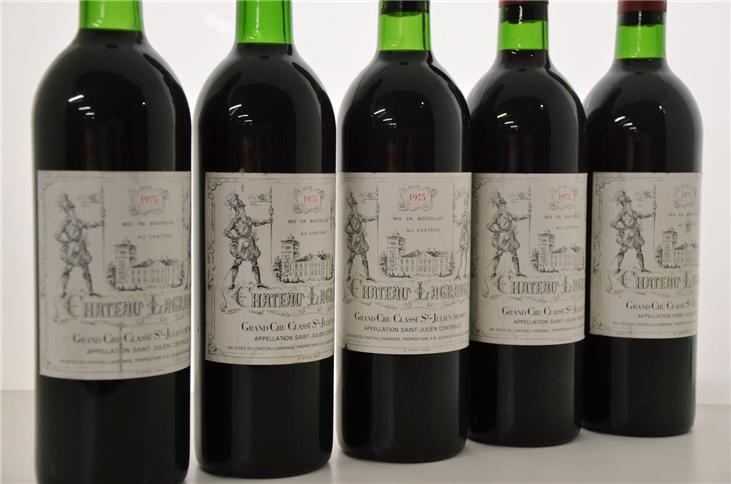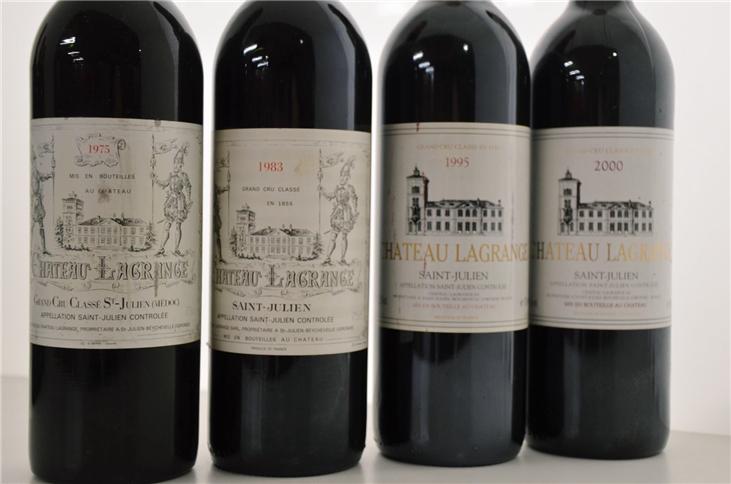Château Lagrange started humble but is today a successful Third Growths Winehouse. The estate is 182 hectares large and located entirely within the appellation of Saint-Julien. When the property was acquired by the Japanese company Suntory the French were sceptical, but we can’t deny: the Japanese people have made Château Lagrange great again.
The appellation Saint-Julien
Saint-Julien is an Appellation d'Origine Contrôlée (AOC) for red wine in Bordeaux, more specifically the Médoc subregion. The wines of this appellation are mainly produced in Saint-Julien-Beychevelle, which is located on the left bank between Margaux en Pauillac.
The primary grape of the Saint-Julien is Cabernet Sauvignon, along with Cabernet Franc, Merlot, Malbec, Petit Verdot and traces of Carménère. The southern wines are described to be smoother and more feminine, while the northern wines are more robust and powerful. Château Lagrange is located in the north of the Saint-Julien appellation.
The history of Château Lagrange
The story of Château Lagrange dates back to the Gallo-Roman times when the original estate was called Villa Rustica. During the Middle Ages, the Templars joined two domains and made Lagrange the largest wine producer in the Médoc. Over the centuries, the domain was owned by many different people.
In the 18th century Baron de Brane, a Bordeaux parliament member and owner of Mouton, bought the estate. It’s then influential merchant Jean-Valère Cabarrus invested in Lagrange and spread its wines among his sales network.
The Italianate tower, which is also depicted on the label, was constructed in 1796 by the following owner Jean Valerie Cabarrus, Napoleon’s Finance Minister in Spain. But it was his successor, Count Duchatel, who was the first to improve the domain’s wines truly: he added a drainage system to the vinery. This is very common today but back in the days revolutionary.
In 1855, the year of the Bordeaux Wine Official Classification, Château Lagrange was ranked as Third Classified Growths. It was truly a golden age for the estate but all changed in the 20th century because of the World Wars and Depression.
In 1983, the Japanese Group Suntory acquired the domain and appointed Marcel Ducasse and Kenji Suzuta to restructure the vineyard and renovate the estate. This was the beginning of the rebirth of the château. Year after year they put in hard work and investments. Today Château Lagrange is led by Matthieu Bordes and Keiichi Shiina, who keep refining the production.
The exceptional terroir of Château Lagrange
The centre of the domain is the highest point in Saint-Julien. The estate covers 182 hectares and has a gravelly soil combined with sand or iron-rich clay, depending on the plot. The soil is perfect for the Cabernet Sauvignon grape and covers 67% of the vineyard. 28% is dedicated to the Merlot grape and 5% to Petit Verdot that gives the wines of Château Lagrange their unique complexity.
Château Lagrange is one of the few properties in Saint-Julien that also produces white wine. The white wine vineyard covers 7.5 hectares of which 60% Sauvignon Blanc, 20% Sauvignon Gris and 20% Sémillon. This wine is sold under the name of Les Arums de Lagrange.
In 1985 Suntory also started the production of a second wine: Les Fiefs de Lagrange.
Tradition and perfection
The vines are maintained with great care and respect for tradition. Production is also as eco-friendly as possible. During harvest, the grapes are hand-picked and sorted both manually and by an optical sorting machine. Only the best remain.
The vinification takes place in stainless steel vats with respect to each plot. Each plot has its own vat, which contributes to the quality of the wines. Afterwards, the oenologist of Château Lagrange blends the wines to create a perfect harmony. The wines are aged in oak barrels for at least 20 months.
The wines of Château Lagrange
The wines are described as bright and deeply coloured with notes of fruits and oak. As the young wines contain many tannins, it’s better to wait at least 8 to 10 years before serving your Château Lagrange wine. An ageing period of 10 to 25 years is even better.
In the mood for an intense and complex wine? Discover our handpicked selection of Château Lagrange wines in our online shop.





